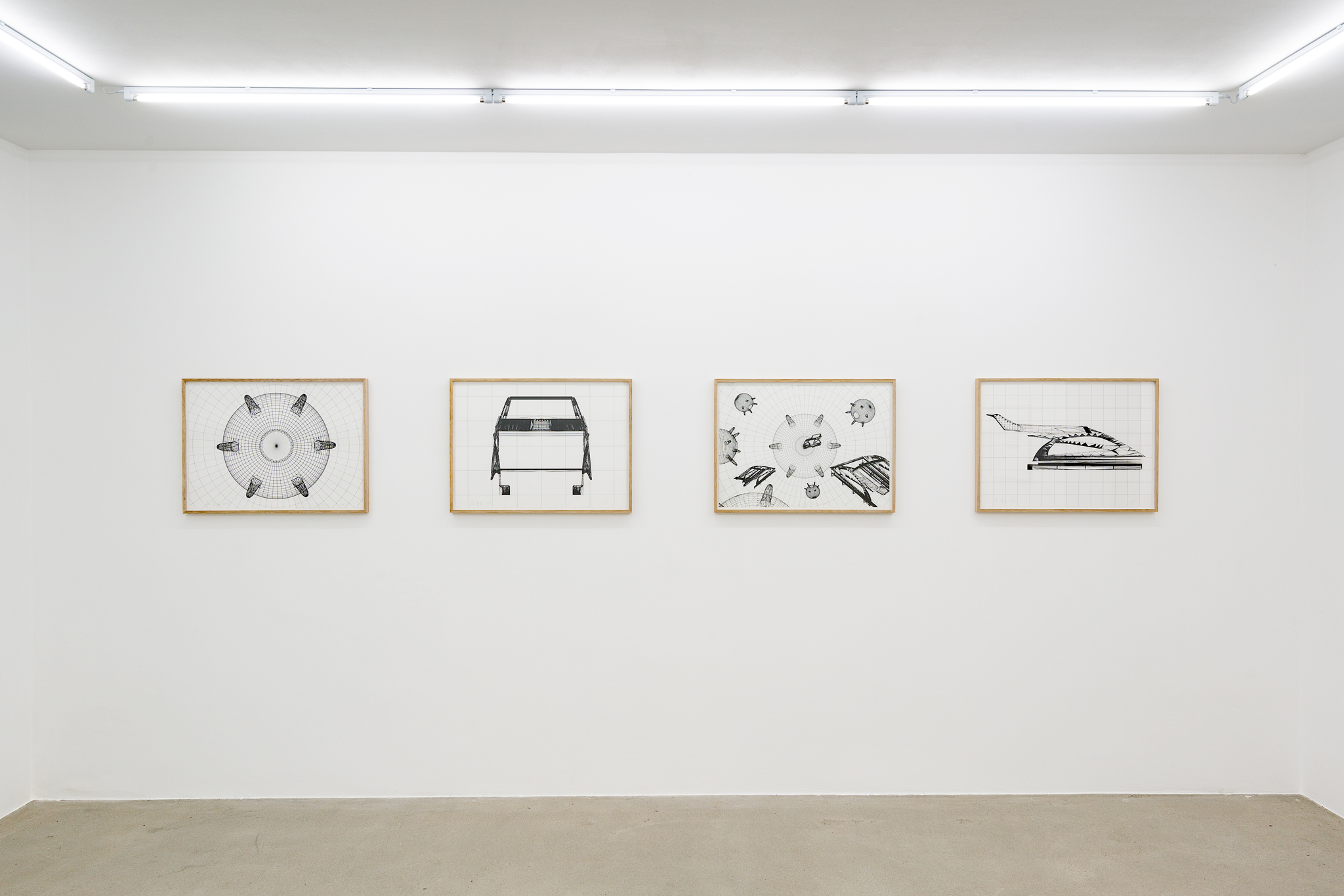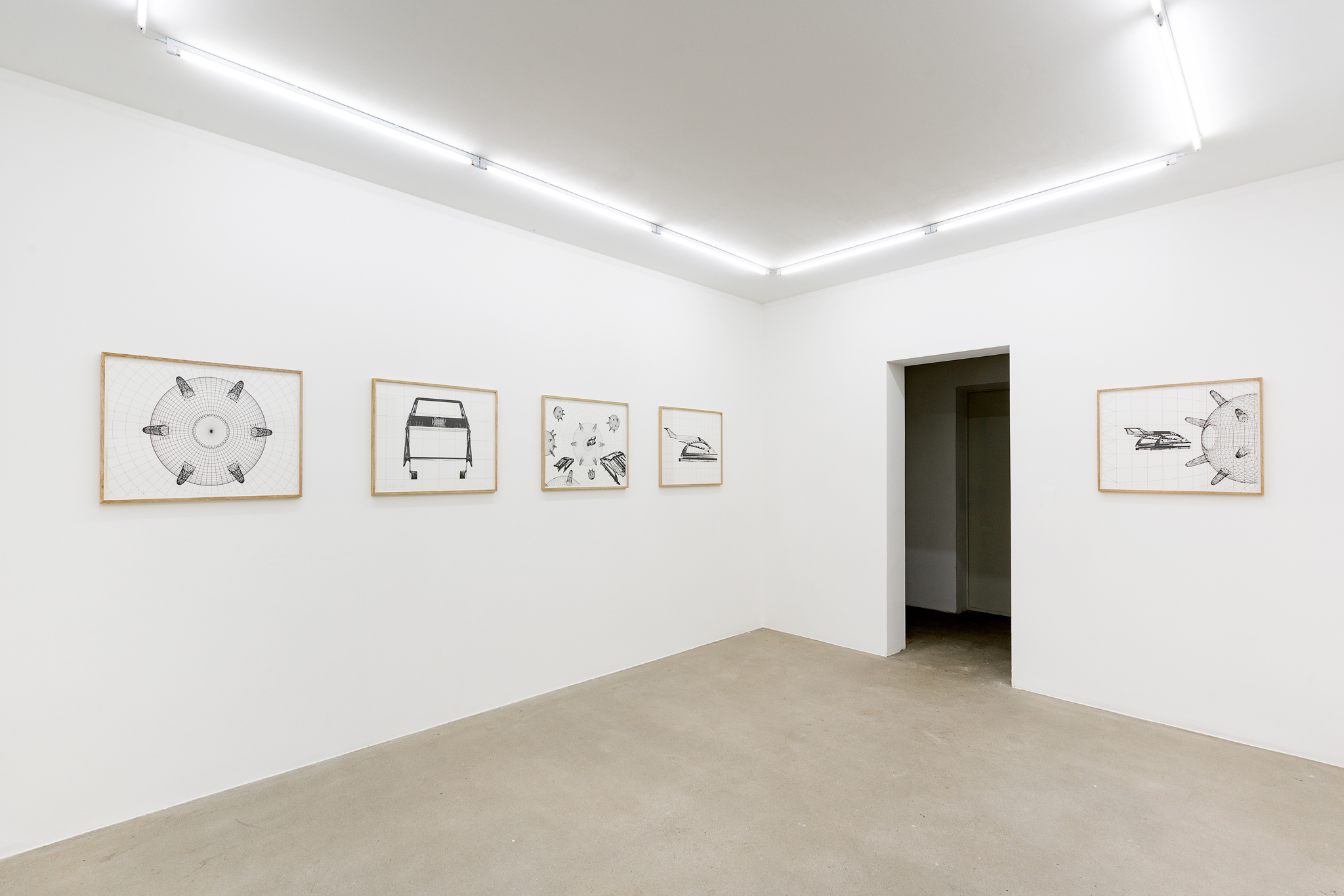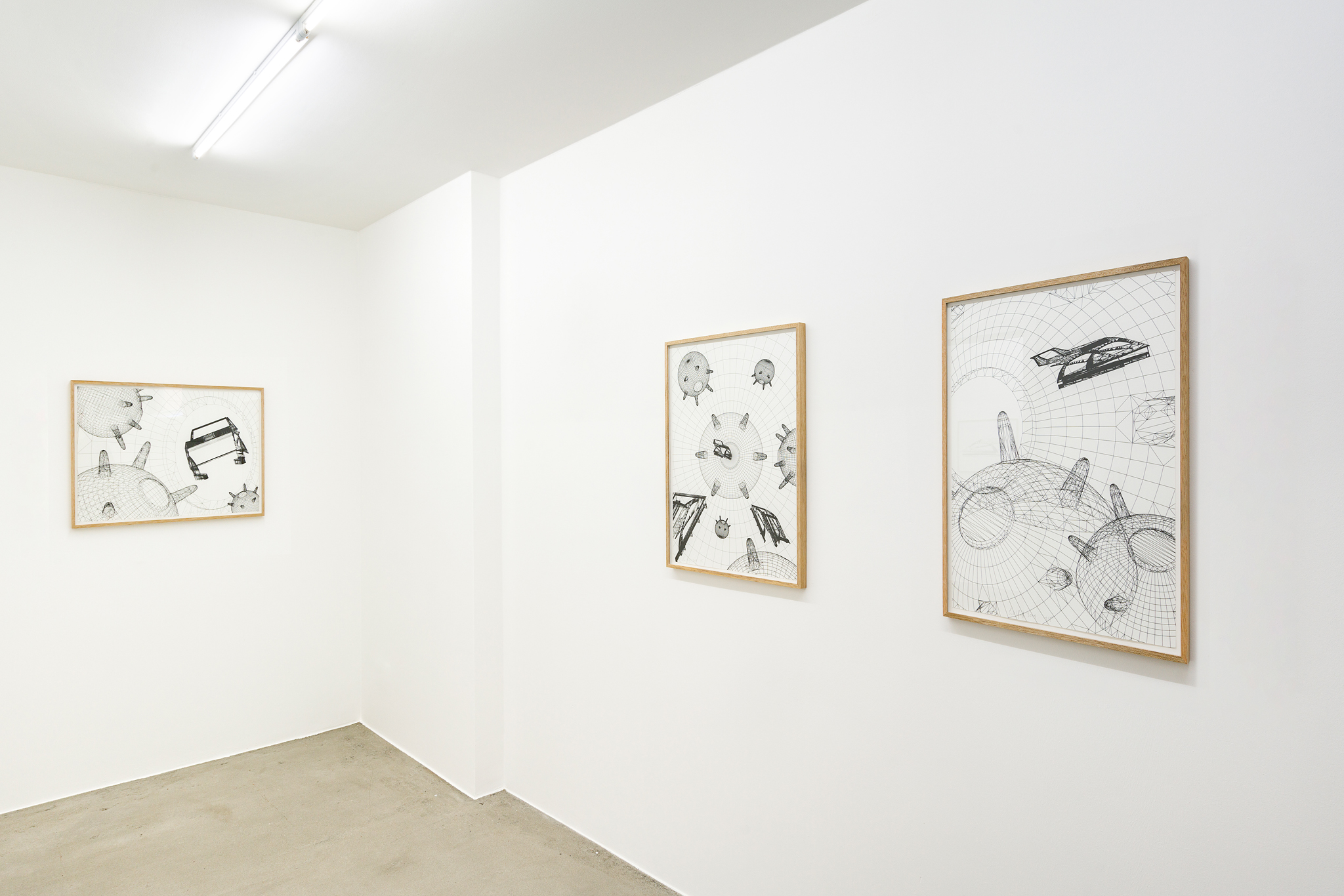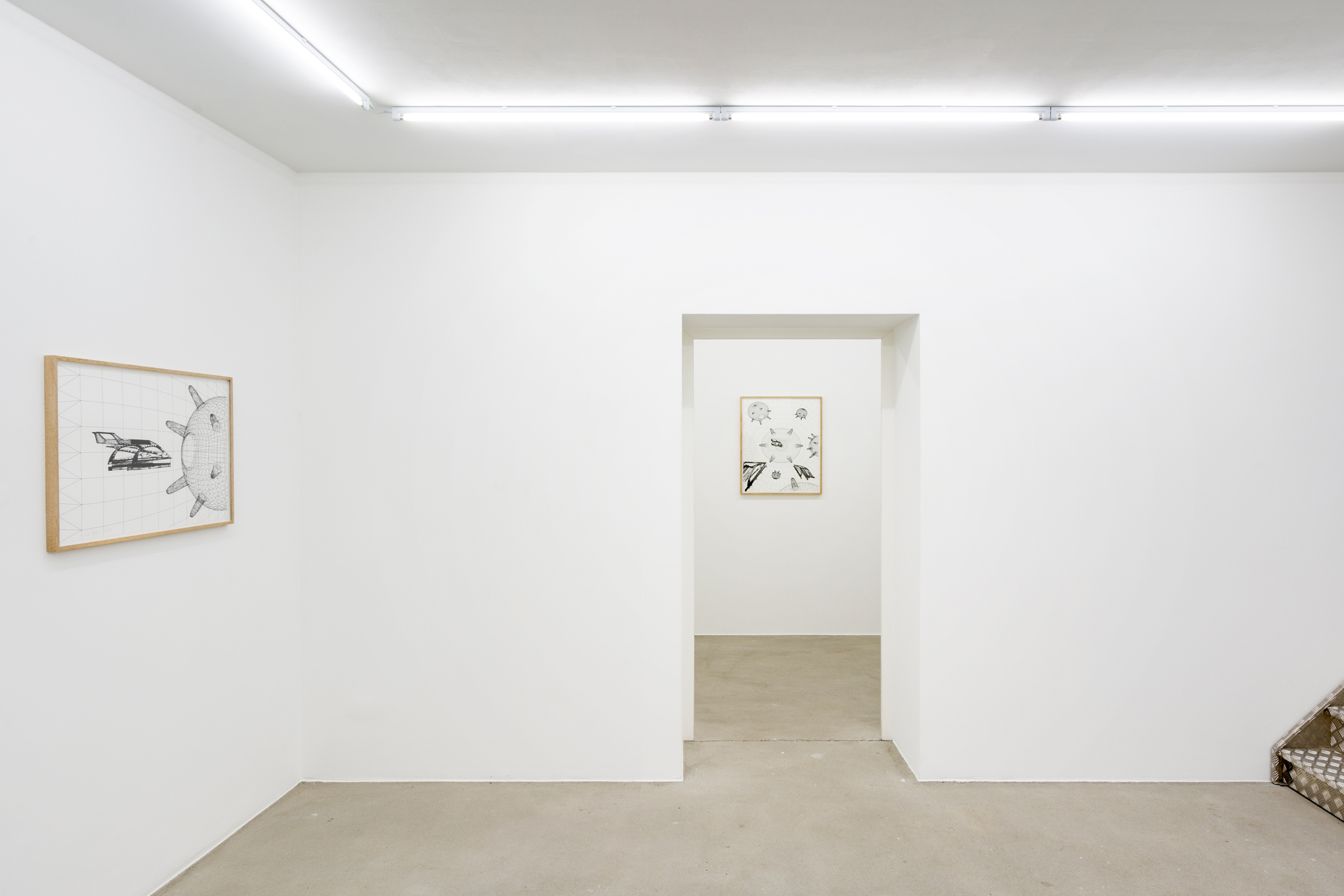
Eva Grubinger, ‘Studies for Malady of the Infinite’, Galerie Tobias Naehring, 2020

Eva Grubinger, ‘Studies for Malady of the Infinite’, Galerie Tobias Naehring, 2020

Eva Grubinger, ‘Studies for Malady of the Infinite’, Galerie Tobias Naehring, 2020

Eva Grubinger, ‘Studies for Malady of the Infinite’, Galerie Tobias Naehring, 2020
In Eva Grubinger’s sequence of drawings for her sculptural installation Malady of the Infinite – currently on show at the Belvedere 21, Vienna – the tense and allusive dynamics of that work are transferred to two dimensions. Malady of the Infinite stages a confrontation in which piratical sea mines, seemingly ‘floating’ as they sit halfway visible on the museum floor, assault a superyacht in a David-and-Goliath scenario. The luxury craft, here, appears to be sinking, only its top deck visible. Grubinger’s sharp, clean studies, made using a computer drawing program, tease out and reinforce the asymmetries of power inherent in this work. In one, for example, a sea mine appears colossal compared to the schematic superyacht cockpit that is seemingly being sucked towards – and even into – it. In another, both mines and multiple cockpits appear to be being sucked into a relentless vortex.
In such studies the incisive tone of Grubinger’s project is made apparent. The mines and the yacht compress our current moment, in which financial inequality is at an extreme and yet even the super-rich, it appears, can never be satisfied. The phrase Malady of the Infinite, coined by Émile Durkheim, refers to a condition of endless and unsatisfiable desire: in Grubinger’s schema, this is applicable across all degrees of the social spectrum. No amount of material goods, seemingly can sate the wealthy; the underclass is perpetually dissatisfied by their position and resorts to lawlessness; and even the middle-class is caught up in an endless struggle to rise to the next station, constantly presented as they are with images of the financial and celebrity elites.
Grubinger’s drawings, which on one level have the feel of blueprints and remind us that behind both the making of a superyacht and an attack by pirates there is invariably a plan, a design, mirror this clash of the rich and the desperate. They locate it, on one level, on the high seas – seafaring, with its overtones of power, conquest and adventuring, a longstanding interest and favoured metaphorical realm of hers. At the same time, though, her drawings, with their sci-fi aspects, put weight on the infinite, turning this into a cosmic battle of wills in Euclidean space, a huge problem repeatedly and variably diagrammed. As with Malady of the Infinite itself, we are parachuted into the midst of the struggle, its outcome as yet unknown.
Martin Herbert, 2020